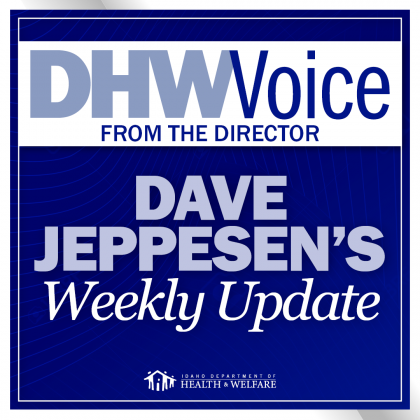From DHW Director Dave Jeppesen: If you suspect child abuse, please report it
One child abused is one child too many.
All children deserve to feel safe in their homes, with their families.
Too often, that is not the case. The Department of Health and Welfare receives nearly 23,000 reports of child abuse, neglect, and abandonment each year in Idaho.
This month, as we recognize National Child Abuse Prevention Month, I urge you to learn what to do if you think a child may be in an abusive situation.
To report suspected child abuse, neglect, or abandonment call:
- Statewide: 855-552-KIDS (5437)
- Treasure Valley: 208-334-KIDS (5437)
- 2-1-1 or local law enforcement
Everyone in Idaho is required to report child abuse, neglect, or abandonment when they know about it. This includes doctors, hospital residents, therapists, interns, nurses, coroners, teachers, daycare providers, social workers, relatives, and friends.
If you aren’t sure if a child is unsafe, it’s important to make the call anyway. It might feel scary and difficult to make the call, but a child’s life could depend on it. When a report is made, a social worker will determine if the report meets the criteria to do a safety assessment. All reports are documented in the department’s database and will be reviewed if more calls are received about the same family.
Callers can choose to provide their name and phone number so they can be contacted to confirm the report or provide more information, or they can remain anonymous. Department staff do not disclose caller information to the family. If the family requests their records, information about the caller is redacted.
Children do best when they can remain safely with their families, and the department works hard to make that happen if possible. Our Child Welfare staff are dedicated to protecting Idaho children, keeping Idaho families together, and putting others first. The work they do is difficult and sometimes unappreciated. I am so grateful for their service.
But they can’t protect children without your help.
I hope you have a safe and healthy weekend.
The Idaho Department of Health and Welfare is dedicated to strengthening the health, safety, and independence of Idahoans. Learn more at healthandwelfare.idaho.gov.


Join the Discussion
Please note the following terms of participation in commenting on the DHW Voice blog.
To ensure a productive discussion you agree to post only comments directly related to this post and to refrain from posting obscenities; threatening, abusive or discriminatory language; sexually explicit material; and other material that would violate the law if published here; promotional content; or private information such as phone numbers or addresses. DHW reserves the right to screen and remove inappropriate comments.